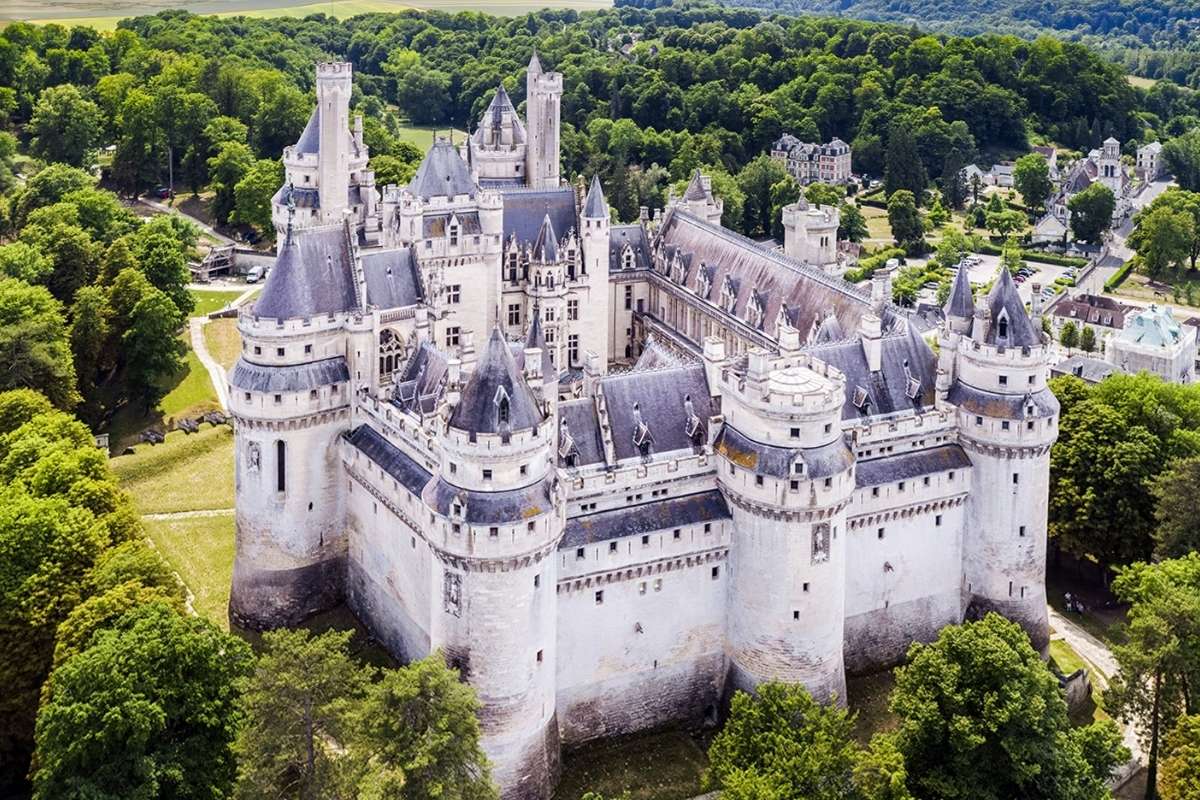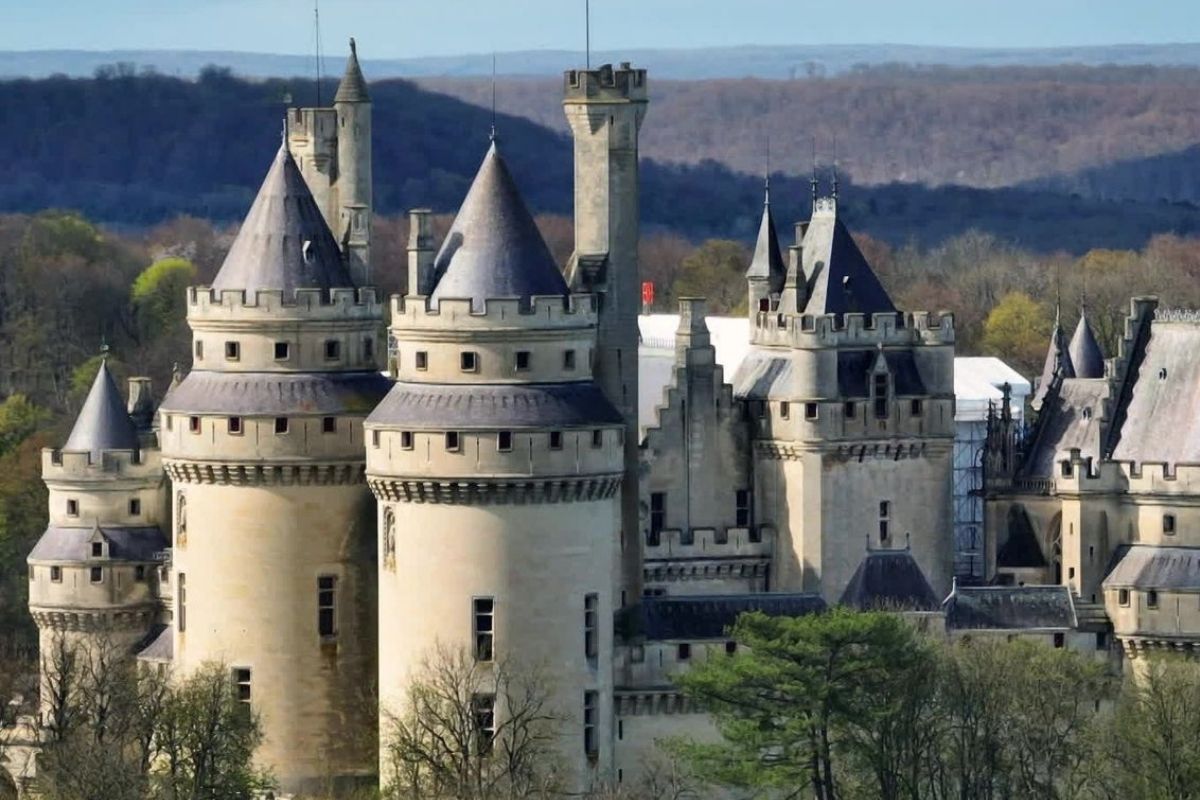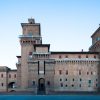Château de Pierrefonds
Château de Pierrefonds stands as a striking testament to the blend of medieval strength and 19th-century romanticism. Originally built in the late 14th century, this French castle has been both a military fortress and a symbol of architectural revival. Its dramatic silhouette, with towering turrets and ornate facades, captures the imagination of all who visit. The castle’s rich history, combined with a visionary restoration led by architect Eugène Viollet-le-Duc, ensures its place as one of France’s most iconic landmarks.
Once a ruin, Pierrefonds rose again in the 1800s to embody the ideals of the Second Empire. Napoleon III commissioned its reconstruction, turning the remnants into a palace that balanced historical fidelity with artistic reinterpretation. Today, Château de Pierrefonds is more than a relic—it’s a cultural gem that draws tourists, historians, and filmmakers alike.
Location of Château de Pierrefonds
Château de Pierrefonds is located in the Oise department of northern France, within the region of Hauts-de-France. The castle lies at the edge of the majestic Compiègne Forest, one of the largest and most beautiful woodland areas in the country. The dense trees surrounding the castle enhance its fairy-tale appearance and offer serene views from its towers.
The nearby town of Pierrefonds provides a charming setting with traditional French architecture, lakeside promenades, and local markets. It is situated approximately 85 kilometers northeast of Paris, making it a popular day-trip destination. Access is convenient by road or rail, and the route through the countryside is especially scenic in spring and autumn.
This region has long been significant in French history. The proximity to Compiègne, a town known for royal residences and historical treaties, adds further prestige. Visitors often combine trips to Château de Pierrefonds with explorations of nearby historical sites and natural reserves.

History of Château de Pierrefonds
Château de Pierrefonds was originally constructed in the late 14th century by Louis of Valois, Duke of Orléans and brother to King Charles VI. Designed as a fortified stronghold, it featured thick walls, machicolations, and defensive towers. The castle served as both a military base and a noble residence, symbolizing the Duke’s power in a turbulent era.
In 1617, during the reign of Louis XIII, the castle was besieged and dismantled by royal troops. Its owner, François-Annibal d’Estrées, had opposed the central government, and the king ordered the partial destruction of Pierrefonds to curb dissent. For over two centuries, the once-mighty fortress remained in ruins, an evocative reminder of France’s feudal conflicts.
The transformation of Château de Pierrefonds began in the mid-19th century. Napoleon III acquired the site and commissioned Eugène Viollet-le-Duc to restore it. Viollet-le-Duc, famed for his work on Notre-Dame de Paris and Mont Saint-Michel, embraced the project with both historical sensitivity and creative liberty. He imagined Pierrefonds not just as it once was, but as it could have been—a perfect example of a medieval castle.
The reconstruction between 1857 and 1885 combined accurate Gothic elements with new stylistic interpretations. The result was a palace-like structure with intricate interiors, dramatic spires, and richly decorated halls. Viollet-le-Duc’s approach often sparked debate, but his vision ensured that Château de Pierrefonds became a lasting monument to France’s architectural heritage.
Throughout the 20th century, the castle served various roles, including military use during both World Wars. It was later opened to the public as a cultural site, and its cinematic appeal led to appearances in films and television series, including the BBC’s Merlin.

Current status
Today, Château de Pierrefonds is managed by the French Centre des Monuments Nationaux. It welcomes visitors year-round and offers a captivating journey through history, art, and architecture. The castle’s vast halls, ornate chapels, and reconstructed royal apartments are open to the public and frequently host exhibitions.
Visitors can explore the keep, inner courtyards, and walk along the fortified walls. Educational displays provide insights into both the medieval origins and the 19th-century restoration. The Salle des Preuses, with its impressive statues of legendary female warriors, is a highlight. Another favorite is the crypt, where eerie sculptures by Viollet-le-Duc evoke the spirits of the past.
Guided tours are available in multiple languages, offering deeper understanding of the architecture and history. Interactive exhibits and family-friendly activities make it an engaging destination for all ages. The castle grounds are also popular for leisurely walks, and seasonal events often include reenactments, concerts, and night-time illuminations.
Château de Pierrefonds remains a thriving symbol of French heritage. It bridges the medieval and modern, the historical and the mythical. Whether you’re a history enthusiast, architecture lover, or curious traveler, the castle offers an unforgettable experience in the heart of northern France.
Admission
Community features
Castle features
Video
Location
Official website
Featured listings














